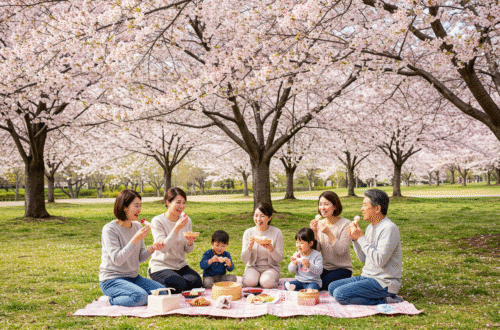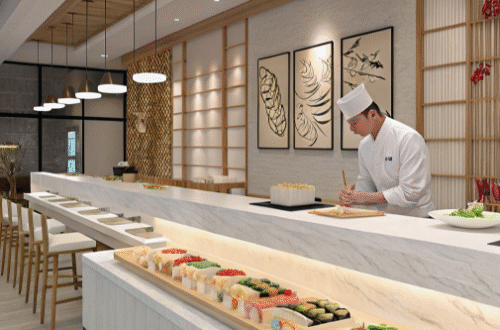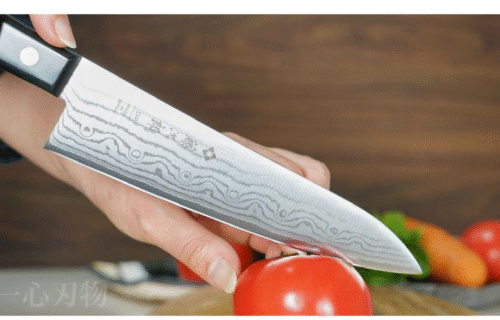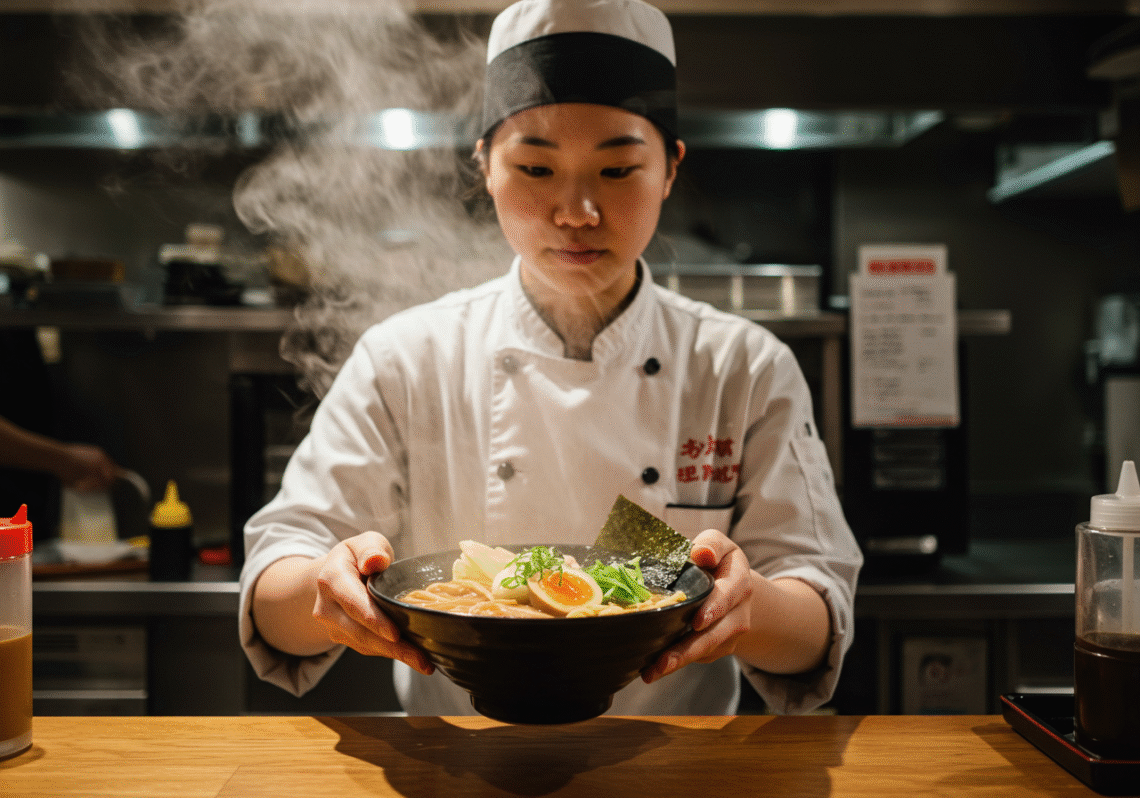
04-02. Welcome to Ramen Heaven! A complete guide to Japanese ramen that can be enjoyed by everyone from beginners to enthusiasts.
As you walk through the streets of Japan, there are moments when you are suddenly drawn to a captivating aroma. It is the rich, appetizing scent of pork bones and chicken carcasses simmered slowly over time. Following the scent, you find a line of people stretching out the door of the shop. Their destination is, of course, a bowl of “ramen.”
Japanese ramen is a dish that exists on an entirely different level from the instant noodles you’ve tasted before or the ramen served at Japanese restaurants abroad. It’s not just a simple soup noodle dish. Within a single bowl lies the philosophy, passion, and decades of refined technique of the craftsman—a hot, hot “universe.”
However, this universe is vast, and first-time visitors may feel a bit overwhelmed. The mysterious ticket machine at the entrance, the customers’ orders that sound like incantations (“Kata-me, Ko-i-me, Oo-me!”), and the countless flavor options…
Rest assured. This guide is your “bible.” Whether you’re a ramen novice or already a die-hard fan, by the time you finish reading this page, you’ll have the knowledge and courage to confidently walk through the doors of any ramen shop and find the best bowl of ramen of your life.
Are you ready? Let’s open the door to “Ramen Heaven” together, beyond the steam.
Chapter 1: Dissecting Ramen – The Five Elements That Make Up the Ultimate Bowl
A bowl of ramen is like an orchestra. Soup, noodles, sauce, flavored oil, and toppings. When these five elements are in perfect harmony, a bowl of ramen that moves people is born. First, let’s introduce each of the performers one by one.
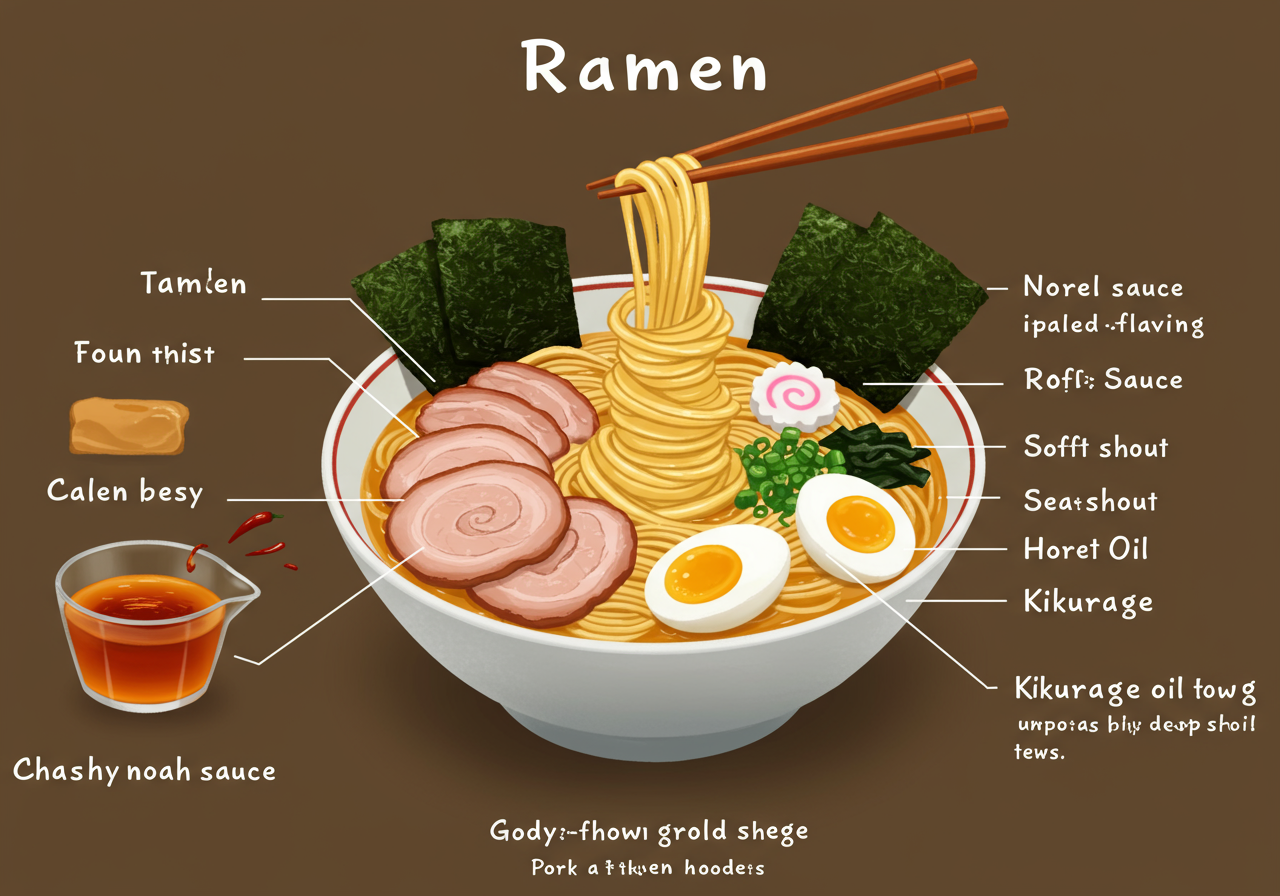
1. Soup: The place where every story begins
- Animal-based broth:
- Tonkotsu: A creamy, cloudy soup made by boiling pork bones over high heat for a long time to extract the umami and collagen from the marrow.
- Tori-gara: A clearer, more refined soup made by boiling chicken bones. It is often blended with tonkotsu.
- Others: Various parts such as pig’s feet (Tonsoku) and backbones (Segara) create complex flavors.
- Fish-based broth (Gyokai):
- Dried sardines (Niboshi): Dried small sardines. Characterized by a distinctive strong aroma and a slightly bitter umami flavor.
- Katsuobushi: A staple of Japanese cuisine. Adds a refined, smoky aroma.
- Konbu: Rich in glutamic acid, it provides a deep umami base for the soup.
- Others: Various seafood such as mackerel flakes and flying fish are also used.
The flavor can be varied infinitely depending on whether these broths are used alone or combined with animal-based and seafood-based broths to create a “double soup.”
The concentration of the soup is also an important indicator.
- Kotteri: Rich soup with a thick, creamy texture and a high fat content. Sometimes topped with seabura (pork back fat).
- Assari: Clear soup with a low fat content. Allows you to enjoy the delicate flavor of the broth.
2. Men (Noodles): The star ingredient that envelops the soup
If soup is the soul, then noodles are the body. Japanese ramen chefs search relentlessly for noodles that perfectly complement their soup.
- Shape and thickness:
- Straight noodles: These noodles go well with soups that have a smooth texture, such as Hakata tonkotsu ramen.
- Wavy/curly noodles: The curls of these noodles hold the soup well, making them a perfect match for rich soups such as Sapporo miso ramen.
- Thin Noodles vs. Thick Noodles: Generally, thin noodles are paired with light soups, while thick noodles are paired with rich soups.
- Water Content:
- Low-water noodles: Noodles made with less water during production. They have a strong wheat flavor and absorb soup easily. Hakata ramen noodles are a representative example, and their tendency to stretch led to the “extra noodle” culture.
- High-water noodles: Noodles with a high water content. They have a smooth, chewy texture and are less likely to stretch. Kitakata ramen is a famous example.
3. Tare: The command center that determines the flavor direction
The soup made by boiling dashi alone still has a vague flavor. Adding “tare” determines the flavor direction of the ramen (soy sauce flavor, miso flavor, etc.). Tare is a closely guarded secret at each restaurant.
- Soy Sauce Tare (Shoyu Tare): Made with soy sauce as a base, combined with kelp, dried sardines, aromatic vegetables, and other ingredients.
- Salt Tare (Shio Tare): Made with salt as a base, combined with dashi from shellfish like scallops or clams, kelp, and other ingredients.
- Miso Tare (Miso Tare): Made with miso, a traditional Japanese seasoning, combined with garlic, ginger, spices, and other ingredients.
4. Aroma Oil: The Magic of Fragrance
The oil that glistens on the surface of the bowl is aroma oil. It is not just oil, but an important “magic of fragrance” that preserves the flavor, richness, and temperature of ramen.
- Chicken Oil: Golden oil extracted from chicken skin. It has a sweet and mellow aroma.
- Back Fat (Seabura): Pork back fat. Adds richness and sweetness, the source of its addictive charm.
- Dried Fish Oil and Shrimp Oil: Oils that concentrate the aroma of seafood, giving the soup a strong impact.
5. Toppings: Supporting actors that add personality
Finally, toppings complete the appearance and taste of ramen.
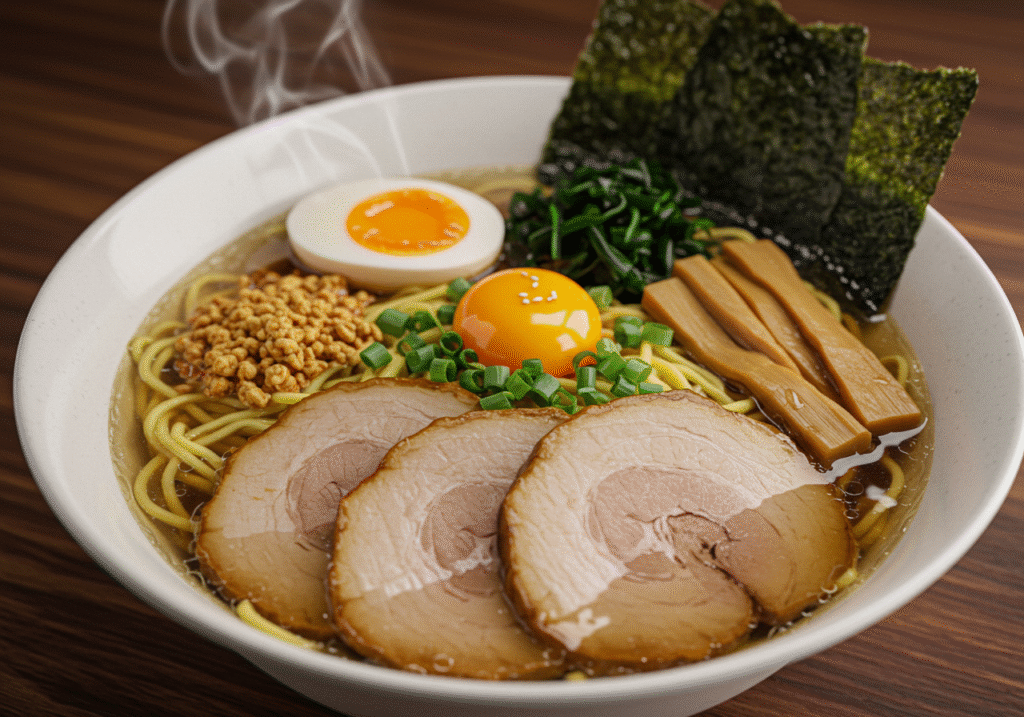
- Chashu: The highlight of ramen. Pork belly or shoulder is slowly simmered in sauce. It comes in a variety of textures, from soft and flaky to meaty and chewy.
- Ajitama / Ajitsuke Tamago: Soft-boiled eggs marinated in sauce. The perfect ajitama, with its creamy yolk, is a symbol of happiness in itself.
- Menma: Fermented bamboo shoots. Their crunchy texture adds a nice accent.
- Negi (Green Onion): White or green onions are used, adding a crisp texture and refreshing aroma.
- Nori: Dried seaweed. It is recommended to soak it in the soup and eat it with the noodles.
Chapter 2: The Compass of Flavors – Finding Your Destiny Bowl
Now that you understand the basic components of ramen, it’s time to explore the flavors. Here, we will introduce four flavors that represent the Japanese ramen world. Which one is your favorite?
Shoyu Ramen: Nostalgic Japanese Heart
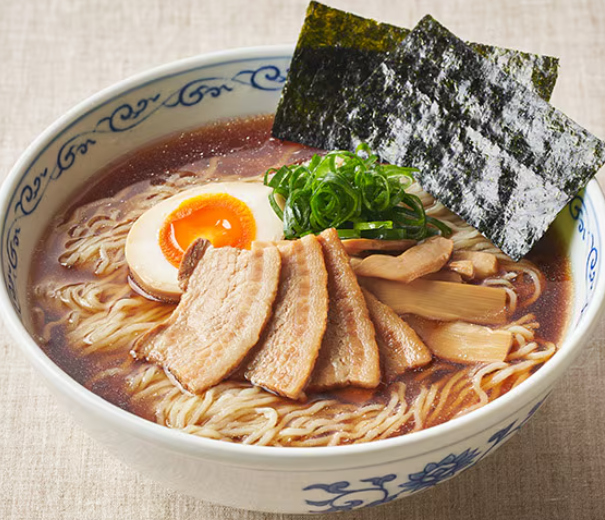
When people hear “Japanese ramen,” this is the classic, universal style that most people think of first. The clear soup, made from chicken bones or pork bones, is enhanced by the aromatic flavor of soy sauce. Its simplicity means that the quality of the broth and the sharpness of the soy sauce are crucial, making it a world of profound depth.
- Features: Clear brown broth, well-balanced flavor.
- Representative styles: Tokyo ramen, Kitakata ramen (Fukushima), Asahikawa ramen (Hokkaido).
- Recommended for: First-time ramen eaters, those who prefer a light, never-boring taste.
Miso Ramen: Rich flavor cultivated in the northern lands
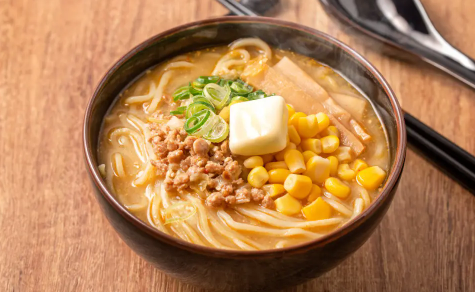
A rich and flavorful bowl of ramen that boldly uses miso, a traditional Japanese seasoning. Originating in Sapporo, Hokkaido, it was devised as a way to survive the harsh winter cold. The soup combines pork bone broth and miso sauce, with the sweetness of stir-fried vegetables and the flavor of garlic added to warm the body from the core.
- Features: Rich and robust flavor, satisfying warmth.
- Typical style: Sapporo ramen (Hokkaido). Often topped with corn and butter.
- Recommended for: Those who want a rich and punchy flavor, and those who want to warm their hearts and bodies on cold days.
Shio Ramen: Deep flavor behind simplicity
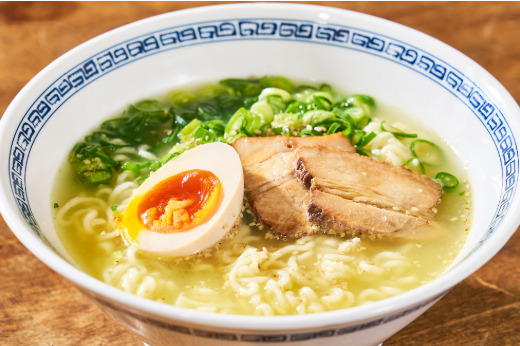
The simplest of the four types, this style allows the flavor of the soup broth to come through directly. Since the sauce is not strong, you can thoroughly enjoy the delicate umami flavors of the ingredients, such as chicken bones, seafood, and kelp. Although it looks light, the flavor is surprisingly complex and deep.
- Features: Clear, transparent soup with a delicate, refined flavor.
- Representative style: Hakodate Ramen (Hokkaido).
- Recommended for: Foodies who want to savor the natural flavors of ingredients, and those who prefer lighter, less rich dishes.
Tonkotsu Ramen: The magic of creamy white soup
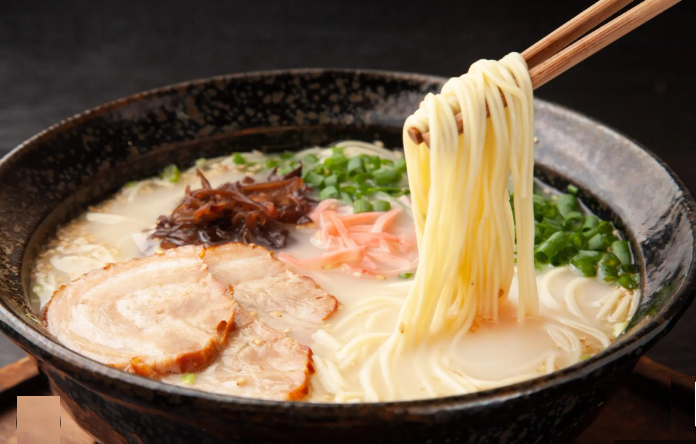
Originating in Kyushu, Fukuoka (Hakata), this ramen is characterized by its milky white soup made by simmering pork bones over high heat for a long time. The collagen extracted from the bones gives the soup a creamy and rich texture, similar to a potage. It has a distinctive animal-like aroma, but this is what makes it authentic and has captivated many enthusiasts.
- Features: Milky white creamy soup, rich umami flavor, distinctive aroma.
- Representative styles: Hakata ramen, Nagahama ramen (Fukuoka).
- Unique culture of tonkotsu ramen:
- Noodle firmness specifications: You can specify the firmness of the noodles when ordering. The order of firmness from hardest to softest is: “Bari-kata (Very Hard)” → “Kata (Hard)” → “Futsu (Normal)” → “Yawa (Soft).” We recommend starting with “Kata.”
- Kaedama (extra noodles): A system where you can order extra noodles. The low-water-content, ultra-thin noodles tend to stretch easily, so the portion size is relatively small. Once you finish the noodles, order “Kaedama kudasai!” (Extra noodles, please!). Leaving the soup is an absolute rule.
Chapter 3: Let’s eat! – A complete guide to eating at a ramen shop
Now that you have all the knowledge you need, let’s simulate the entire process of walking into a ramen shop and enjoying the best bowl of ramen, step by step.
STEP 1: Finding a restaurant and waiting in line
- How to find a restaurant:
- Ramen DB (Ramen Database): Japan’s largest ramen review site. Full of detailed reviews by enthusiasts.
- Tabelog: The Japanese version of Yelp. You can find reviews of all kinds of restaurants, not just ramen shops. A rating of 3.5 or higher indicates a good restaurant.
- Google Maps: The easiest option. Search for ramen shops near your current location and make your decision based on ratings and photos.
- Queuing Rules: Popular restaurants inevitably have lines. However, there are unspoken rules to follow.
- Quietly line up at the back: This goes without saying.
- Buy a meal ticket first? If there is a sign at the entrance saying, “Please purchase your meal ticket first,” buy your ticket at the vending machine inside the store before returning to the line. This is the most common scenario.
- No holding spots for others: It is considered rude to hold spots for friends or family members. Everyone should line up together.
- Enter when called by staff: Staff will call out, “Next customer, please!” Do not enter without being called.
STEP 2: Overcome the vending machine barrier!
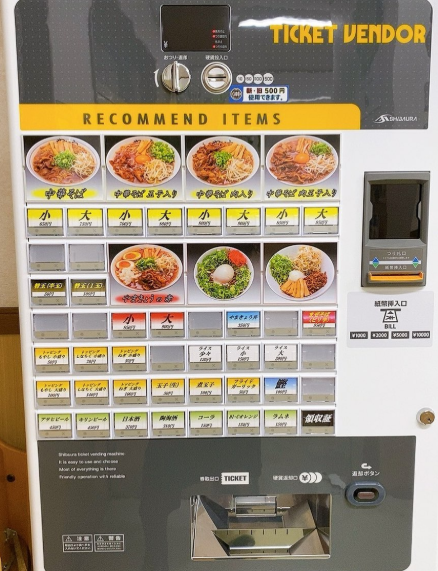
Many ramen shops use a ticket vending machine system where you insert cash, press a button, and purchase a meal ticket. This is a rational system designed to reduce the hassle of ordering and paying in a busy shop. However, for travelers who don’t understand Japanese, this can be a major obstacle at first. But don’t worry!
- Basic operation:
- First, insert money (bills or coins).
- Press the button for the menu item you want to order.
- Take the meal ticket and change that comes out.
- Key button explanations:
- Ramen (Ramen / 拉麺): The store’s signature ramen.
- Special (Tokusei) / All-in (Zenbu-nose): A luxurious version with all toppings like char siu and flavored eggs added. Go for this if you’re unsure!
- Flavored egg (Ajitama): A flavored egg topping.
- Char siu (Chashu): Extra char siu.
- Oomori (Large Portion): Increases the amount of noodles (usually 1.5 times the standard portion).
- Kaedama (Extra Noodles): Refill of noodles (common at tonkotsu ramen shops).
- Rice: White rice.
- Beer: Beer.
- Last resort: If there is a menu with photos, just point to what you want. If you’re unsure, ask the staff, “What do you recommend? (Osusume wa dore desu ka?)” and they should be happy to help.
STEP 3: Tell us your preferences – Create your own unique cup of tea
After purchasing your meal ticket and being shown to your seat, place the ticket on the counter. At this point, in some restaurants (especially those serving family-style ramen or tonkotsu ramen), the staff will ask you, “Okonomi wa arimasu ka?” (Would you like any special requests?). This is a magical question that will help you create your perfect bowl of ramen.
- Hardness of the noodles: Hardness of the noodles
- Very Hard – Very Hard
- Hard – Hard
- Normal – Normal
- Soft – Soft
- Richness of the flavor: Richness of the flavor
- Richer – Richer
- Normal – Normal
- Thin (Usu-me) – Lighter
- Amount of oil (Abura no Ryo): Amount of oil
- More (Oome) – More
- Normal (Futsu) – Normal
- Less (Sukuname) – Less
If it is your first time, it is safest to order everything as “normal (Futsu)”.
STEP 4: When the ramen arrives – Enjoy it with respect
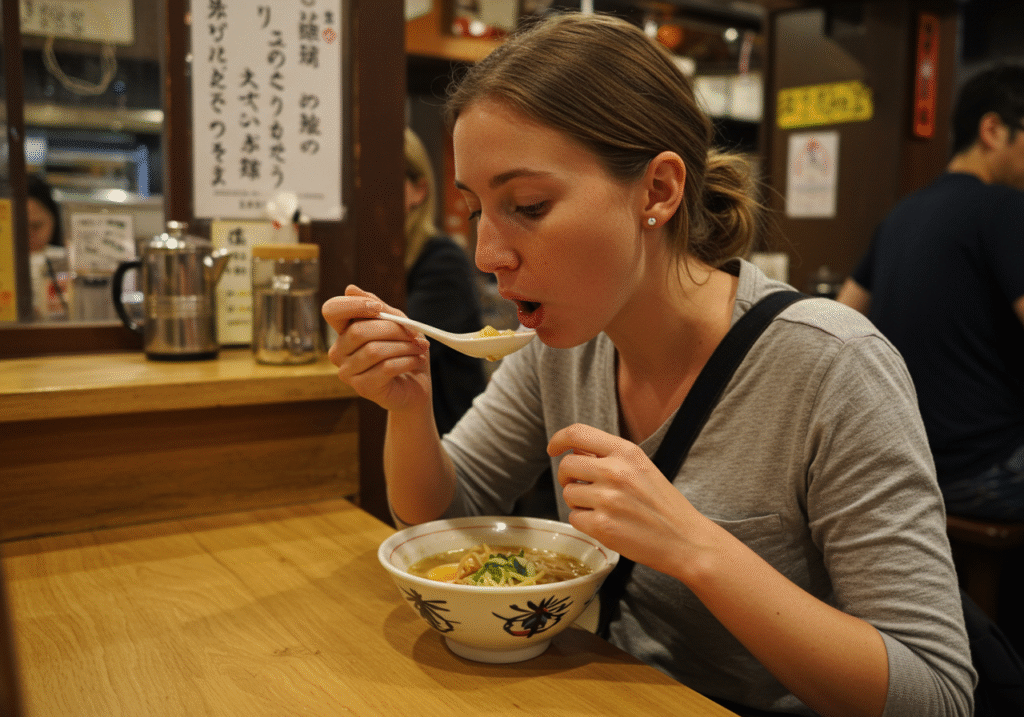
Finally, your ramen is placed in front of you. Now, let’s enjoy it at its best.
- First, the soup: Before eating the noodles, take a spoonful of soup with a renge (spoon). This is the moment when the soul of the restaurant permeates your body.
- Is it okay to slurp? Yes, of course! In fact, it is recommended. There is a reason for this.
- By slurping the noodles, you also take in air, allowing the aroma of the soup to spread through your nasal passages and enhance the flavor.
- It also helps cool down the hot noodles as you eat them. Look around at the Japanese people around you. Everyone is enjoying their ramen with a satisfying “slurp!” Don’t be shy—give it a try!
- Enjoying “aji-hen” (flavor changes): On the table, you’ll find “table condiments” such as pepper, chili oil, vinegar, chopped garlic, and red ginger. First, enjoy the original flavor, and once you’ve eaten about half, add a little of these condiments to enjoy the flavor changes—that’s the way the pros do it.
STEP 5: Finish eating and express gratitude
Once you have finished eating, conclude with a beautiful Japanese custom.
- Handling the bowl: Once you have finished eating, you can leave the bowl on the counter. In some restaurants (especially those in the Jiro style), it is customary to place the bowl on the upper shelf of the counter as a sign of gratitude, but generally, leaving it as is is acceptable.
- Words of gratitude: When you stand up from your seat, say **”Gochisousama deshita”** to the staff. This is a wonderful phrase meaning “Thank you for the delicious meal.” This simple phrase brings the greatest joy to the craftsmen.
Chapter 4: The Door to the World of Ramen Enthusiasts – Entering the Deeper World of Ramen
Once you have mastered the basics, try venturing into the deeper world of ramen.
Tsukemen: A New Way to Enjoy Noodles
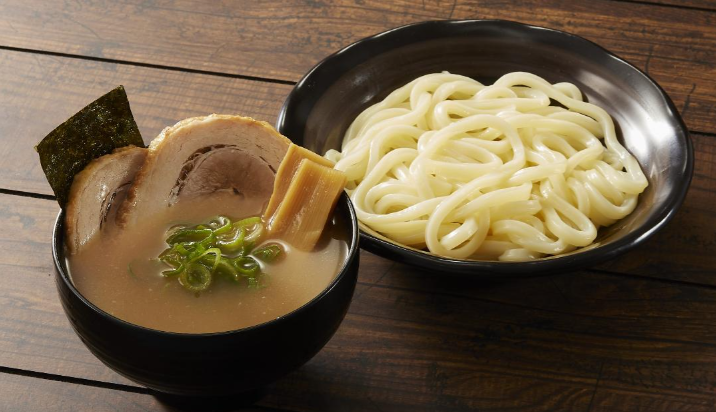
This is a noodle dish that is similar to ramen but different. The firm noodles are rinsed in cold water and then dipped into a separate bowl of thick, piping hot soup. This dish allows you to enjoy the taste and texture of the noodles themselves.
- How to eat:
- Pick up a few noodles with chopsticks and dip them into the dipping sauce. It is recommended to dip only half to two-thirds of the noodles, rather than the entire length.
- Like ramen, slurp the noodles with vigor.
- Soup-wari: Once you have finished eating the noodles, ask the staff for “soup-wari.” They will add the restaurant’s broth soup to the remaining dipping sauce, creating a soup of the perfect concentration to drink.
Abura Soba / Maze Soba: The appeal of soup-less noodles
This soup-less ramen dish consists of thick noodles, char siu pork, green onions, egg yolk, and other ingredients mixed well with a small amount of sauce and flavored oil at the bottom of the bowl before eating. Its addictive, junk-food-like taste is its appeal.
Jiro-style Ramen: A mountain of noodles waiting for challengers
This is no longer just a genre of ramen, but rather a proper noun referring to the restaurant “Ramen Jiro” and the restaurants that have been influenced by it (inspired by it).
- Features: Incredible volume. Thick, chewy noodles like udon, mountains of boiled vegetables (bean sprouts and cabbage), thick slices of char siu called “pork,” and a generous amount of chopped garlic.
- Unique ordering method “Call”: Just before the ramen is served, the owner asks, “Would you like garlic?” At this point, specifying the amount of free toppings (garlic, vegetables, oil, and karame) is called the “call.” For first-timers, it is wise to start with “a little garlic” or “as is.” This is a challenge for advanced eaters, and ordering lightly could leave you overwhelmed by the quantity. However, its addictiveness is immense.
A Journey to Discover Local Ramen
Japan is a treasure trove of unique local ramen dishes. One of the best ways to enjoy your trip is to try the local ramen specialties.
- Kitakata Ramen (Fukushima): A light soy sauce flavor based on pork bones, served with chewy, thick, curly noodles.
- Wakayama Ramen (Wakayama): Characterized by a pork bone soy sauce soup. It is traditionally eaten with “hayazushi,” a type of pressed mackerel sushi.
- Onomichi Ramen (Hiroshima): A soy sauce-based soup made with chicken broth and dashi from small fish from the Seto Inland Sea. The soup is topped with minced pork back fat.
- Tokushima Ramen (Tokushima): A rich pork bone soy sauce soup topped with sweet and spicy braised pork belly and a raw egg.
Chapter 5: Ramen Heaven FAQ – Answering Travelers’ Final Questions
- Q1: Is it okay to go alone?
- A: No problem at all. In fact, ramen is often enjoyed alone, and there are many solo diners. Most ramen shops have counter seats, so you won’t feel awkward even if you go alone.
- Q2: Is cash the only payment method?
- A: Many independently owned ramen shops still only accept cash. In particular, ticket vending machines almost always only accept cash. Be sure to bring cash (especially 1,000 yen bills and coins).
- Q3: I’m worried that the portion size is too large…
- A: If the ticket machine has buttons for “half noodles (Men-hanbun)” or “small ramen (Sho-ramen),” select those options. If not, when handing over the ticket, say, “Please make the noodles smaller (Men, sukuname de onegai shimasu),” and they will often accommodate your request.
- Q4: Are there vegetarian/vegan ramen options?
- A: Traditional ramen uses pork bones or chicken carcasses, so it’s difficult, but in recent years, especially in major cities like Tokyo, there has been an increase in high-quality vegetarian/vegan ramen specialty shops that use only kelp, mushrooms, and vegetables for their broth. “T’s Tantan” is a well-known chain. We recommend researching specialty shops in advance.
- Q5: Can I bring my children?
- A: Most restaurants with table seating are fine. However, in narrow restaurants with only counter seating or popular restaurants with long lines, it may be difficult to bring small children. Judge based on the atmosphere of the restaurant.
- Q6: What about chain restaurants like “Ichiran” or “Ippudo”?
- A: These are excellent choices! In particular, Ichiran’s “Taste Concentration Counter,” where each person is separated, offers a unique experience. Both restaurants are accustomed to serving foreign tourists in multiple languages and maintain very high quality. They are perfect for those new to ramen or anyone looking to enjoy a delicious bowl with peace of mind.
- Q7: Is instant ramen worth trying?
- A: Absolutely! The evolution of Japanese instant ramen is truly remarkable. At supermarkets and convenience stores, you can find a wide variety of “famous store reproduction series” that recreate the flavors of renowned restaurants. They also make excellent souvenirs.
Conclusion: Your ramen journey begins now
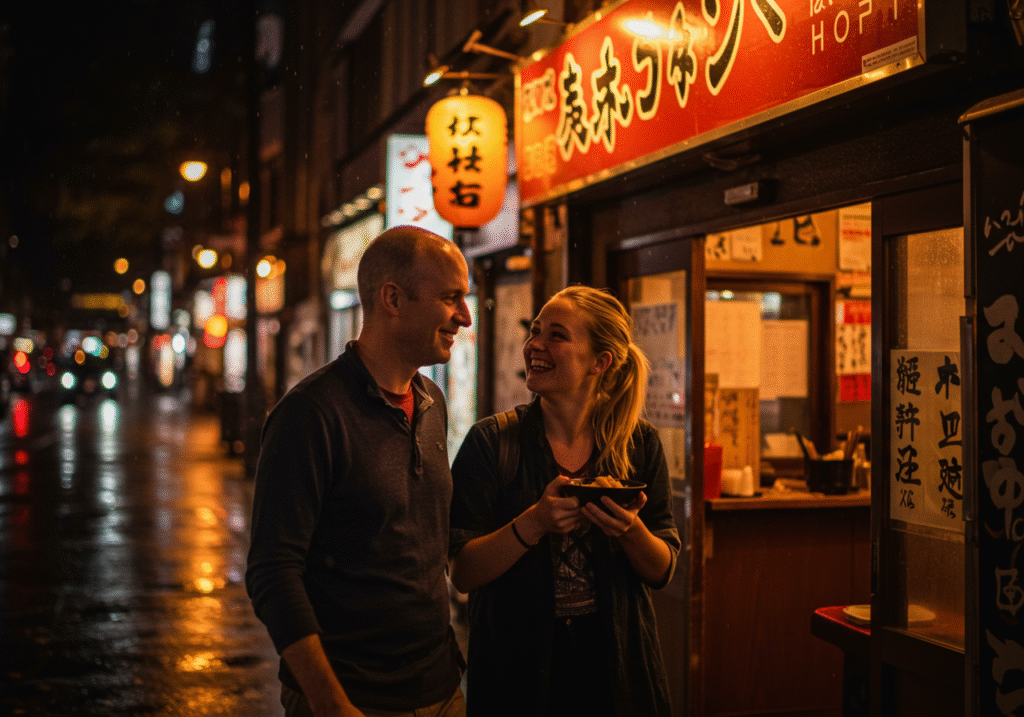
An endless universe spreads out in a single bowl. That is Japanese ramen. After this long journey, you are no longer just a tourist. You have become a “ramen traveler” who understands the language of ramen, respects its culture, and seeks out your own perfect bowl.
Soy sauce, miso, salt, pork bone. Straight noodles, curly noodles. Light, rich. The combinations are as numerous as the stars in the sky. There is no such thing as the perfect bowl. The bowl that you yourself feel is “the best” is your perfect bowl.
I hope this guide will serve as your compass on this journey. However, the real adventure is just beginning. Stand in line, press the button on the ticket machine, and slurp up the blissful bowl that emerges from the steam. Each of these experiences will enrich your memories of Japan and make them more meaningful.
Now, step through the curtain and begin your “ramen journey.” The ultimate ramen experience has already begun. Enjoy your meal!

